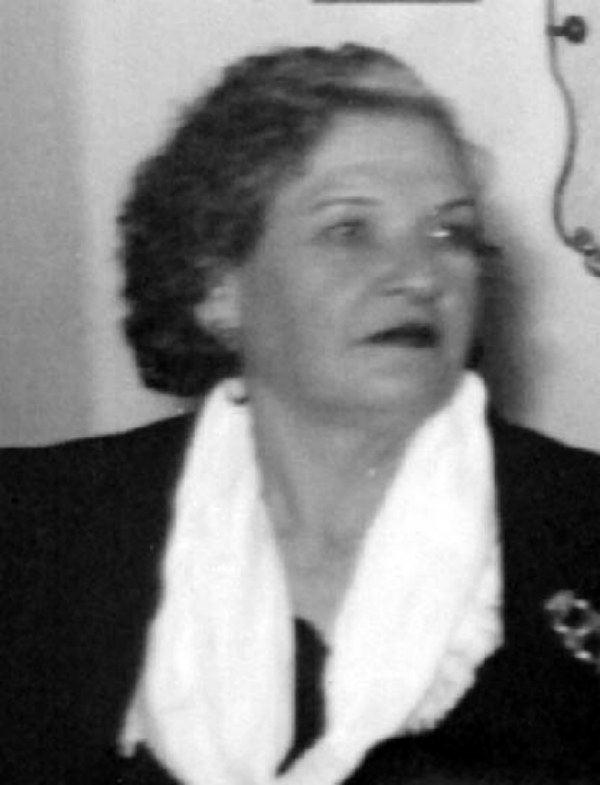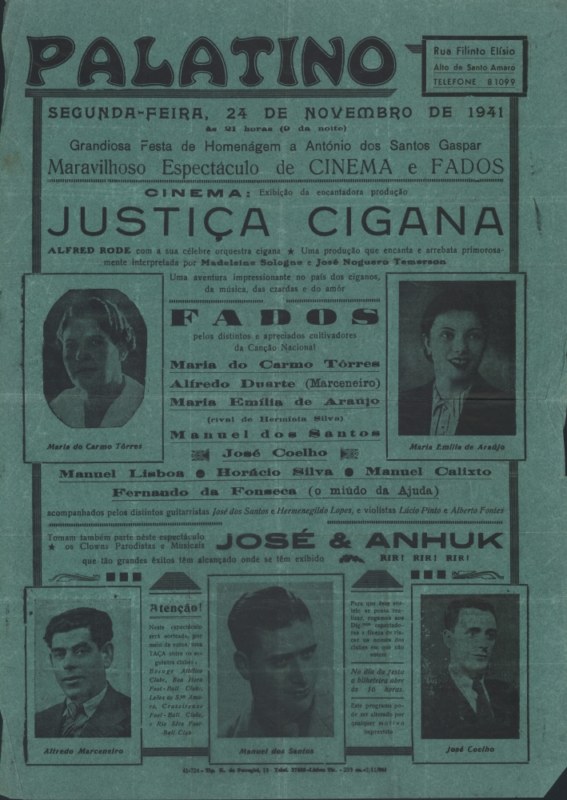Know more:
Maria do Carmo Torres
Maria do Carmo Torres was born in Fuzeta, Algarve, from where she left as a baby to go live in Setúbal with her parents. In this town she worked at a canned food factory; it was at this time she started singing fado as an amateur.
At 19 years old she debuts singing fado in a vaudeville play by Manuel Envia, at Salão Recreio do Povo, in Setúbal, being immediately invited to another one, this time at Casino de Setúbal. It was a very applauded debut and applauses came again in a new play, at Casino do Estoril, in which Maria do Carmo Torres imitated António Gouga: it was such a success that she was forced to sing seven times in a row.
Later, after her son died at 16 years old, she comes to live in Lisbon, willing to follow a artistic career in fado, her only comfort: "I feel the greatest passion for fado. Forbid me everything, but let me express my pain for the lost of my son. Let me sing fado; I feel a great relive when I sing to s six-verse stanza by M. Soares:
In Lisbon, while working behind the counter at Café-Restaurante “Sul-América”, she had to replace the singer Maria Virgínia, and she did it so well that the director Mendes Leal and Alfredo Madeira made it possible for her to buy the professional card.
Maria do Carmo Torres performed at all houses around Lisbon, at many bullfights, some at Campo Pequeno, and several theatres, namely in the plays “Adeus, Artur!” and “O Chico do Intendente”, at motion pictures and charity events. She also performed at “Retiro da Severa”, “Solar da Alegria”, “Café Luso” and “Café Mondego”, where she presented an essentially castiço repertoire.
She was part of the Fado Embassy visiting Brazil and Argentina, which left on August 1934, directed by Alberto Reis, and featuring Maria do Carmo, Branca Saldanha, Filipe Pinto, Joaquim Pimentel, Armandinho (Portuguese guitar) and Santos Moreira (Spanish guitar). In these countries, they performed at Rio de Janeiro, Santos, S. Paulo, Campinas and Belo Horizonte, Buenos Aires, Araracuára and Montevideo.
Becoming a very popular singer, Maria do Carmo Torres also performed at private homes, such as the home of the Countess of Ficalho, and many others.
She was part of the tribute cast honouring the poet João da Mata, presented at Salão Jansen (1931) and cooperated in the tribute to Ângela Pinto, at “Retiro da Severa” (1938).
At the end of the 1940s, Maria do Carmo Torres retires from the artistic life, “wishing to rest, the popular singer Maria do Carmo is travelling north" (cf. Guitarra de Portugal, 1 August 1946), and she died in the 1950s.
To perpetuate the fado singer’s memory, the Lisbon Town Council gave her name to a street in Lisbon, located at Bairro da Cruz Vermelha, at the parish of Lumiar.
Source:
“Canção do Sul”, 1 August 1931;
“Guitarra de Portugal”, 21 April 1934;
“Guitarra de Portugal” 21 August 1934;
“Canção do Sul”, 1 June 1936;
“Guitarra de Portugal”, 1 August 1946;
Machado, A. Victor (1937), “Ídolos do Fado”, Lisboa, Tipografia Gonçalves;

